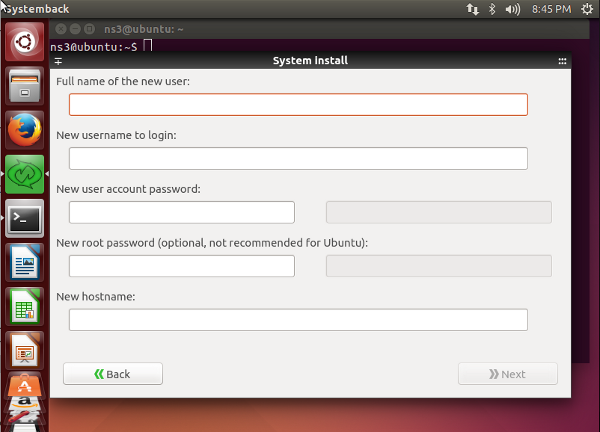MNMTraining2015: Difference between revisions
No edit summary |
|||
| Line 13: | Line 13: | ||
The goal of this session (1pm-5pm) is a comprehensive overview of the simulator (what we can fit into half a day). The instructors will be Tom Henderson and Ken Renard. | The goal of this session (1pm-5pm) is a comprehensive overview of the simulator (what we can fit into half a day). The instructors will be Tom Henderson and Ken Renard. | ||
* Introduction to ns-3: Basic software orientation, survey of capabilities, research performed with ns-3, differences from ns-2, data visualization and management, how the open source project operates. | * [http://www.nsnam.org/tutorials/mnm15/nrl-training-session-introduction.pdf Introduction to ns-3]: Basic software orientation, survey of capabilities, research performed with ns-3, differences from ns-2, data visualization and management, how the open source project operates. | ||
* [http://www.nsnam.org/tutorials/mnm15/tutorial-distributed-ns-3-march-2015.pdf Large-scale, distributed simulations with ns-3] | * [http://www.nsnam.org/tutorials/mnm15/tutorial-distributed-ns-3-march-2015.pdf Large-scale, distributed simulations with ns-3] | ||
* Network emulation and Direct Code Execution environments and examples, enabling hardware-in-the-loop and use of real Linux code. | * [http://www.nsnam.org/tutorials/mnm15/ns-3-training-session-emulation.pdf Network emulation] and [http://www.nsnam.org/tutorials/mnm15/ns-3-training-session-dce.pdf Direct Code Execution] environments and examples, enabling hardware-in-the-loop and use of real Linux code. | ||
=== Thursday March 19 === | === Thursday March 19 === | ||
Revision as of 16:58, 18 March 2015
Main Page - Roadmap - Summer Projects - Project Ideas - Developer FAQ - Tools - Related Projects
HOWTOs - Installation - Troubleshooting - User FAQ - Samples - Models - Education - Contributed Code - Papers
This is the wiki page for the ns-3 training sessions being conducted from 18-19 March, 2015 in Ballston VA.
Logistics
The contact is Tom Henderson; email Tom if you have any questions.
Agenda
Wednesday March 18
The goal of this session (1pm-5pm) is a comprehensive overview of the simulator (what we can fit into half a day). The instructors will be Tom Henderson and Ken Renard.
- Introduction to ns-3: Basic software orientation, survey of capabilities, research performed with ns-3, differences from ns-2, data visualization and management, how the open source project operates.
- Large-scale, distributed simulations with ns-3
- Network emulation and Direct Code Execution environments and examples, enabling hardware-in-the-loop and use of real Linux code.
Thursday March 19
This day is planned to run from 9am-12pm and from 1pm-4pm.
Using examples oriented around a Wi-Fi ad hoc mobile scenario, we will cover these topics.
- Running simulations, including manipulating and managing configuration, logging, animation and visualization options.
- Debugging simulations using tools such as gdb, valgrind, and oprofile.
- Mobility and wireless models and scenarios
- Methodology and workflow for developing new models in ns-3, using a case study.
Preparation
Nothing is strictly required, but working through the ns-3 tutorial should be helpful, if you haven't already.
You do not need to install anything to attend the training, but the below instructions are provided for those who may want to follow along.
Installation of ns-3 to your local system
Please see the Installation page on our wiki for per-system package requirements if you want to install ns-3, and follow instructions at this tutorial link on how to download ns-3.
Note that the minimal requirements for working from the command line are a recent C++ compiler (g++ or clang), and a Python (version 2) installation. The additional packages enable additional optional simulation features but can be skipped until needed.
Trying ns-3 on a Live ISO image
A 32-bit Ubuntu 14.04 Live DVD (ISO) is posted for download at this link and will also be available on DVD media at the training session. The ISO has prerequisite packages pre-installed and a recent copy of ns-3 source code.
- sha1 checksum of the ISO image: d77b2cb512543b80d1c62607c9a9a2f3d2108570
- file size of the download: 3.6 GB
- username: ns-3
- password: ns-3
- recommended virtual machine resources (if you install to a VM): 40 GB HDD, 3 GB memory
This is a Live ISO image that can be booted repeatedly without saving state, or can be installed to a drive. The Systemback utility was used to create the image, and can be used to install the system as well. To install, select the green icon in the panel to bring up the below dialog box, fill in the account information (for the system to be created) and then hit Next and follow the instructions.
Please read the README in the top level directory. Note there is a small error in the README; I didn't actually install CORE in this image (but it can be installed from the source code found in training/core/ directory).
Additional files
Links to any additional example files produced for the training (outside of the ns-3 release) will be posted here.
Questions and Answers
Questions and answers will be posted here.
